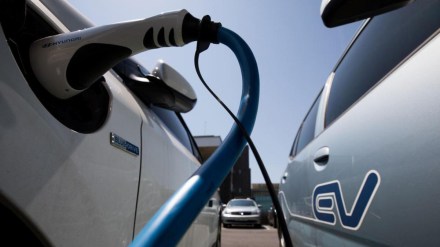Chinese influence on India’s fledgling electric three-wheeler market seems to be waning, with homegrown brands flexing their muscles. From a measly 10% share three years ago, Indian heavyweights —Mahindra & Mahindra (M&M), Bajaj Auto and TVS Motor Company—have rapidly ramped up their presence in the segment in the domestic market.
As per data shared by the Federation of Automotive Dealers Association (FADA), the three Indian legacy brands ended September with a combined market share of 30% in the domestic market — a threefold growth compared to just three years ago. India is the world’s largest electric three-wheeler market with annual sales of more than 700,000 units.
This segment, which continues to be dominated by small players who import auto parts from China and assemble the final vehicle in India, sees monthly sales of 60,000-65,000 units and is estimated to be valued at Rs 10,000-15,000 crore on annual volumes.
While Mumbai-based early entrant M&M has held on to the lead in the segment with a share of 14%, Pune-based Bajaj Auto–the leader in the non-electric three-wheeler category–has used its traditional reach in ramping up operations. Bajaj entered the segment only in mid-2023, but has since then managed to rapidly grab market share to end at 11% by September.
TVS Motor was the latest to enter the segment, having debuted in January 2025. The Chennai-based company closed September with a share of 4%. Italian brand Piaggio, which entered this space in 2019, also faced the heat from the Indian brands as its share declined to 2% from 3% a year ago.
Smaller players which either have technical alliances for design and components with Chinese companies or import fully-built final parts made in China, form the unorganised market of India’s electric three-wheelers. Little known names like YC Electric, Dilli Electric, Mini Metro, Hotage India and several others control 70% of the market. Most of these players are active in Punjab, Bihar, Delhi, Uttar Pradesh, Rajasthan and Madhya Pradesh.
The goods and services tax (GST) on electric three-wheelers is 5%, which is the lowest slab. To boost electric adoption, the government launched the PM E-Drive scheme for e-rickshaws and e-carts wherein Rs 2,500/kWh, capped at Rs 12,500 per and Rs 25,000 per vehicle capped for L5 grade vehicles is provided as incentive on a vehicle whose maximum ex-factory price is Rs 250,000.
Piaggio believes that with the sustained push by the Centre for green mobility, electric penetration in the L5 segment is set to reach 50% by mid-2028. The L5 vehicle is the typical four-seater three-wheeler widely seen in metros.
